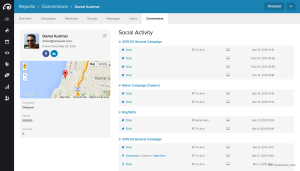The on-demand economy is valued at over $ 57 billion according to BIA/Kelsey. More small businesses are tapping into this category of workers because it allows them to keep their businesses agile, quickly scale up and down, and better control their resources. Those who have not yet integrated them into their workforce, should consider leveraging them for these four reasons.
- Reap the Benefits of Diversity
The on-demand economy boasts an incredibly diverse workforce, making up around 34% of the total U.S. working population, according to Intuit. Americans aged 16-65, spanning from several different races, religions and generations work as on-demand employees. Hiring talent from this independent workforce can bring diversity and, with it, different viewpoints to your business, which can unlock innovation by creating an environment for out-of-the-box thinking.
- Fill Short-Term and Peak Season Needs
Peak seasons aren’t just relegated to retailers. Distribution centers, call centers, moving companies and a swath of other businesses also see surges in demand for their services at different times during the year. The health of your business can depend on the success of your peak season, and staffing is a critical piece of the puzzle. Bringing on independent contractors for short-term work will eliminate the need to go through the tedious paperwork of hiring W2 workers, and give you the option to pay your employee either by the hour or the job. You can also document the performance of your peak season workers and invite the best ones back in subsequent years to save even more time on hiring and training.
- Temporarily Replace Workers on Extended Leave
Full-time employees inevitably take an extended leave at some point during their tenure, whether for maternity leave, a death in the family or a medical situation – and these absences are often unexpected. Independent contractors run the gamut in terms of specialty and experience, and many can be called in at a moment’s notice to serve as a temporary replacement while the employee is away. Many prefer these types of longer assignments because they can settle in and learn the ins and outs of the business. If these employees are going to stay longer than a few days, take time to properly onboard them and integrate them into the company culture.
- Test the Waters Before a Full-Time Hire
It’s not unusual for gig workers to evolve into full-time employees. Starting them in an on-demand position can help you determine if they’re a fit in terms of both performance and culture, since you’ll be able to see them actually work in the role in question. At the same time, it gives them the opportunity to assess your company and determine if the position is something they want to do full time. Stats show the average cost to hire a full-time employee can run in the $ 4,000 range, which is a hefty investment if it doesn’t work out in the end.
Business & Finance Articles on Business 2 Community(30)




